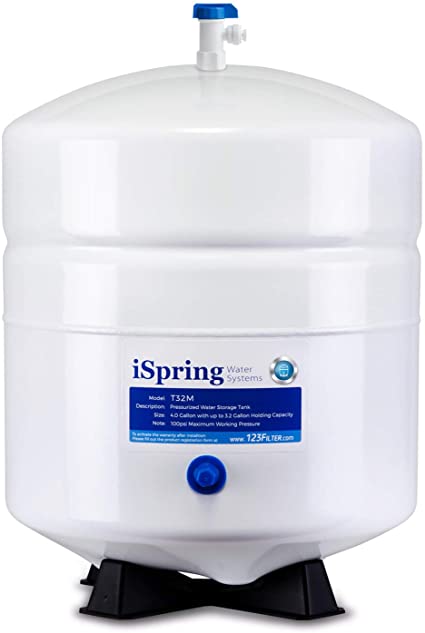What is a reverse osmosis tank?
A reverse osmosis tank is a hydropneumatic pressure tank designed to fit beneath the sink and inline with your reverse osmosis system. The reverse osmosis tank is a storage tank, collecting the water being gradually purified by the reverse osmosis membrane. The reverse osmosis filtration process is a slow one. Water is pushed through the semipermeable membrane one drop at a time. The tank allows water to accumulate, so, when you go to pour yourself a glass of water you can have immediate access to plenty of water. Reverse osmosis tanks are made out of rolled steel and internally lined with an inert material called butyl. The butyl lining ensures that the purified RO water never comes into contact with the steel. How does a reverse osmosis tank work?
Reverse osmosis tanks use air pressure to deliver water from the tank to the dedicated faucet above your sink. Reverse osmosis tanks are hydropneumatic, meaning the tank is holding not only water but also pressurized air. Hydropneumatic storage tanks are capable of delivering pressurized water swiftly and on-demand, without necessitating the assistance of a booster pump. Inside the reverse osmosis tank is both an air chamber and a water chamber, divided in the center by a bladder. Though water does not compress, air will. As the reverse osmosis system feeds water into the storage tank, the weight of the water begins to compress the air chamber. As air compresses, it will continue to increase in pressure. When you open your faucet, this air pressure propels the water out of the tank and up through your faucet. If the tank did not have an air chamber, the tank would fill with water but unable to transport it anywhere without the assistance of something like a delivery pump. Hydropneumatic storage tanks allow you to have a delivery system without an electric pump. The size of the tank predetermines where the water will exist within the tank. In smaller tanks, between one and ten gallons, the water sits on top of the pressurized air chamber. As tanks get larger and larger, the water sits on the bottom of the tank. Water weighs about nine pounds a gallon, so as the volume of stored water increases, the tank needs gravity to assist with the air compression and propulsion of the water out of the tank. On smaller tanks, where the air chamber rests at the bottom, the diaphragm is able to push down into the air chamber and compress the air.
